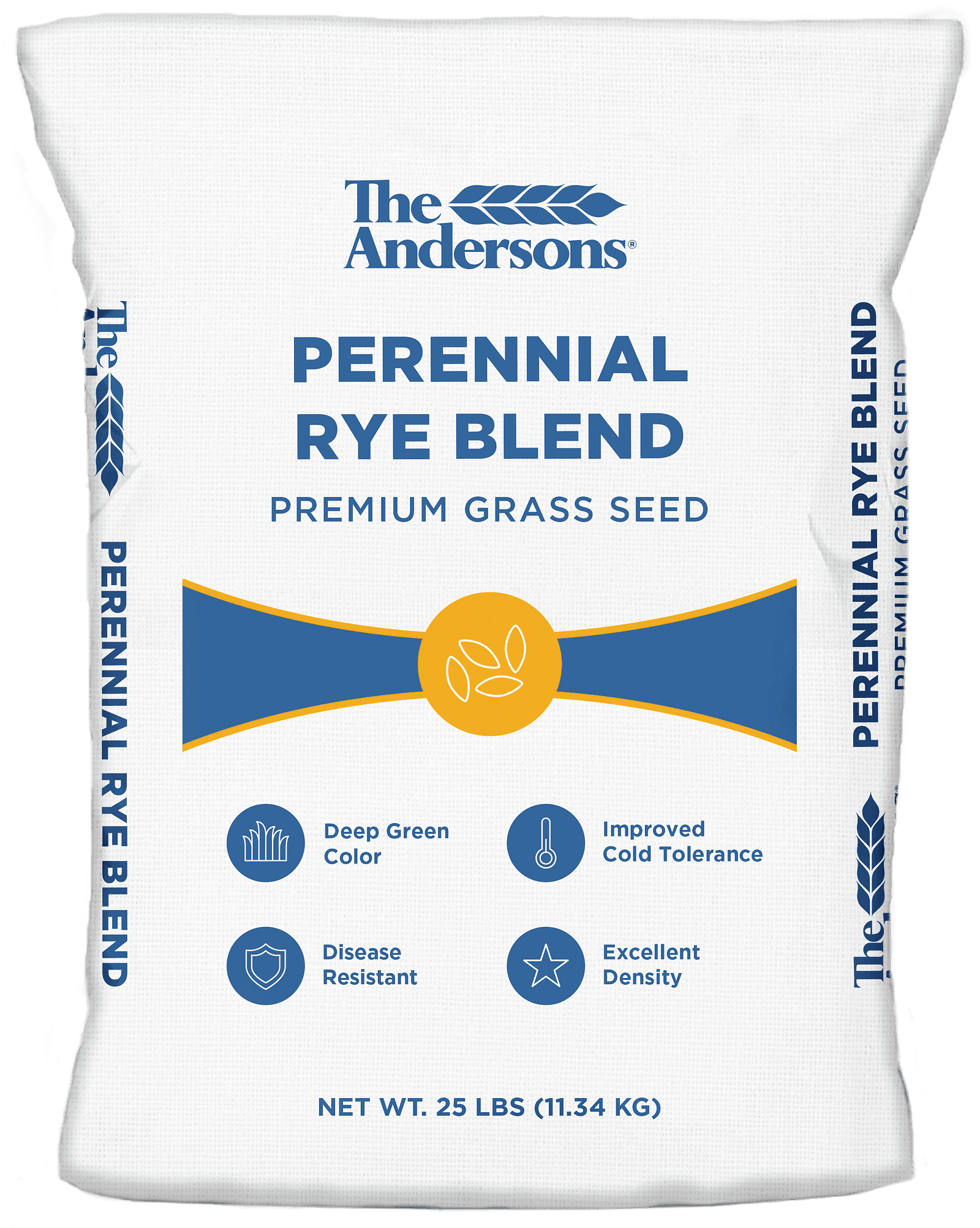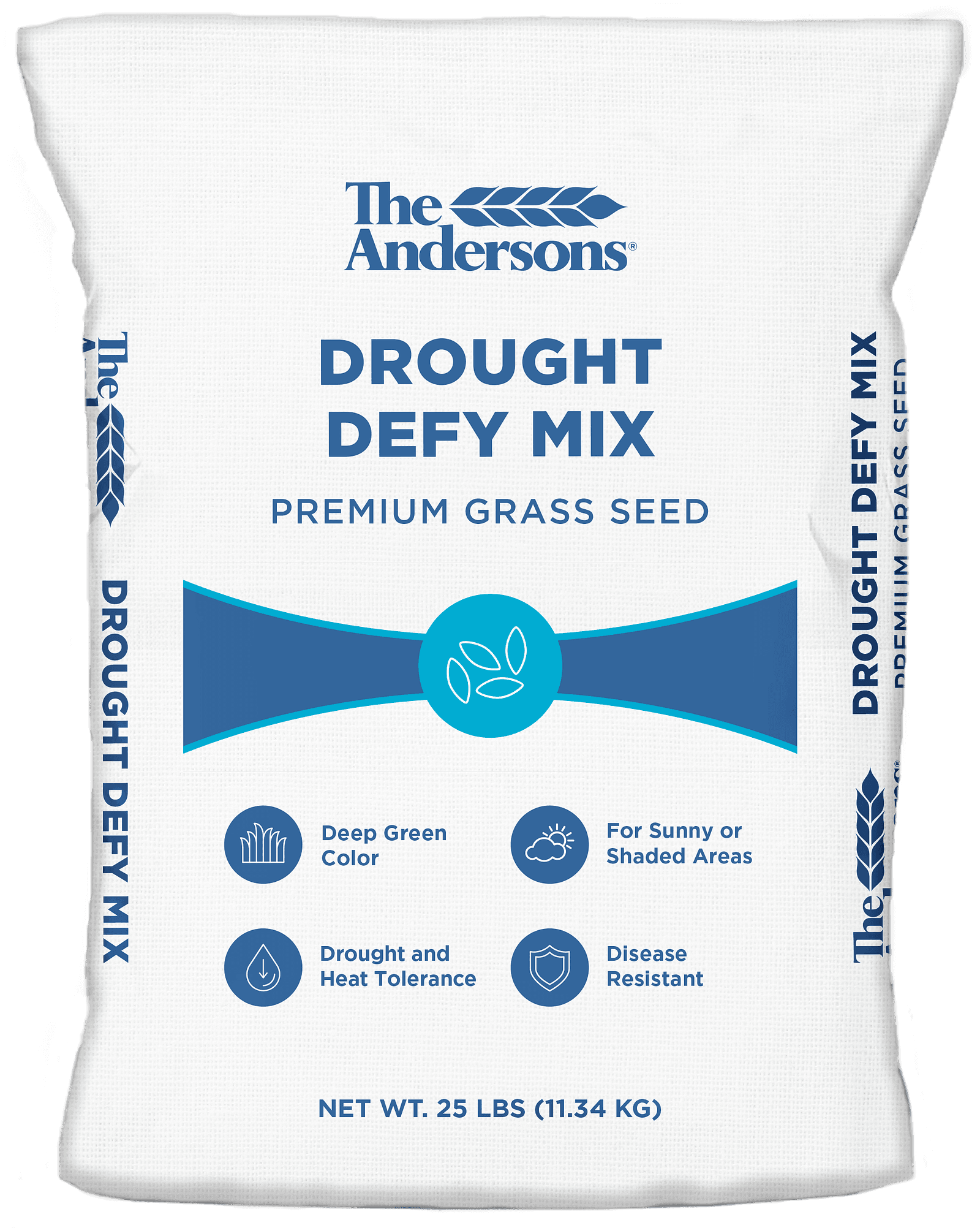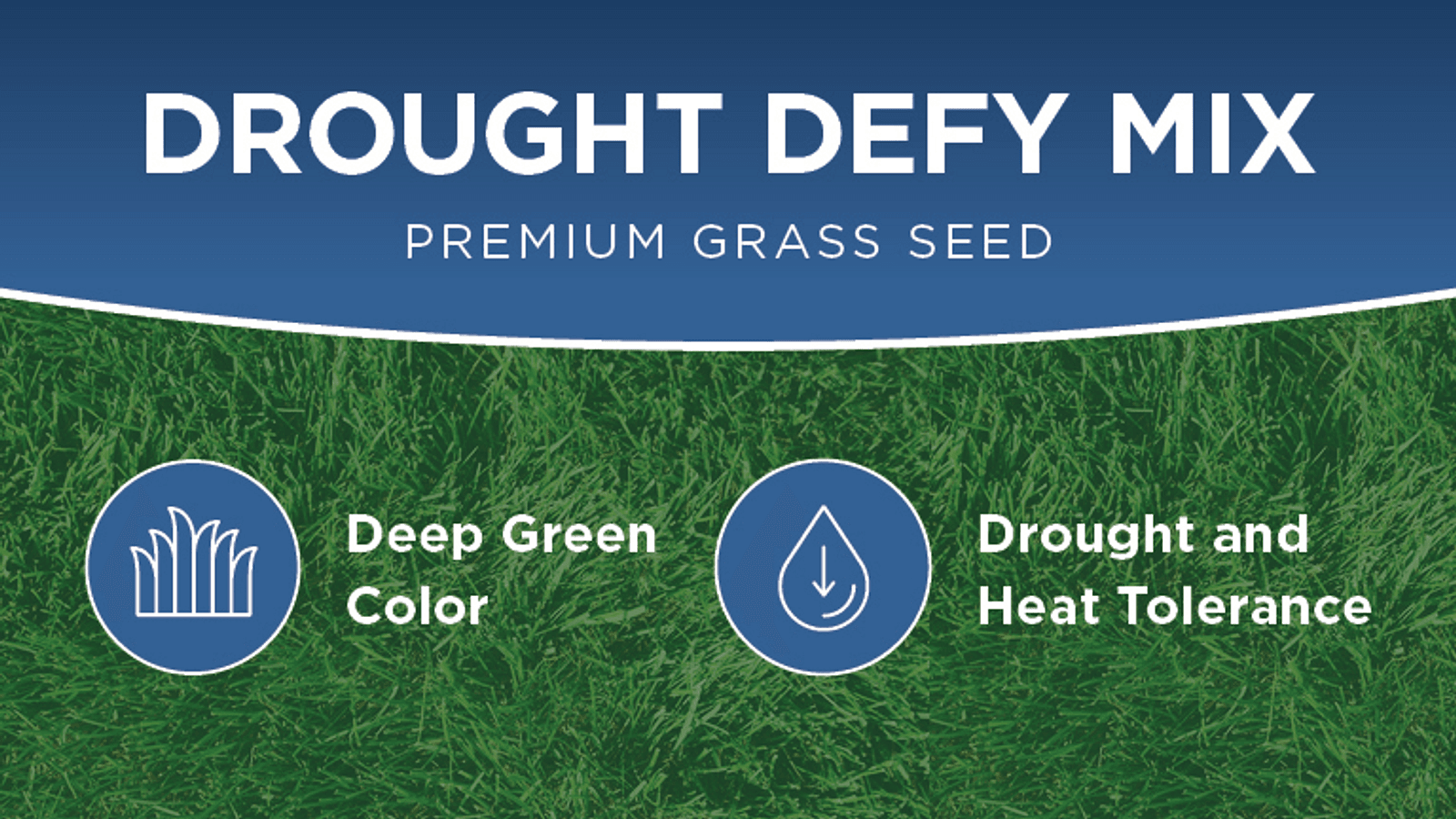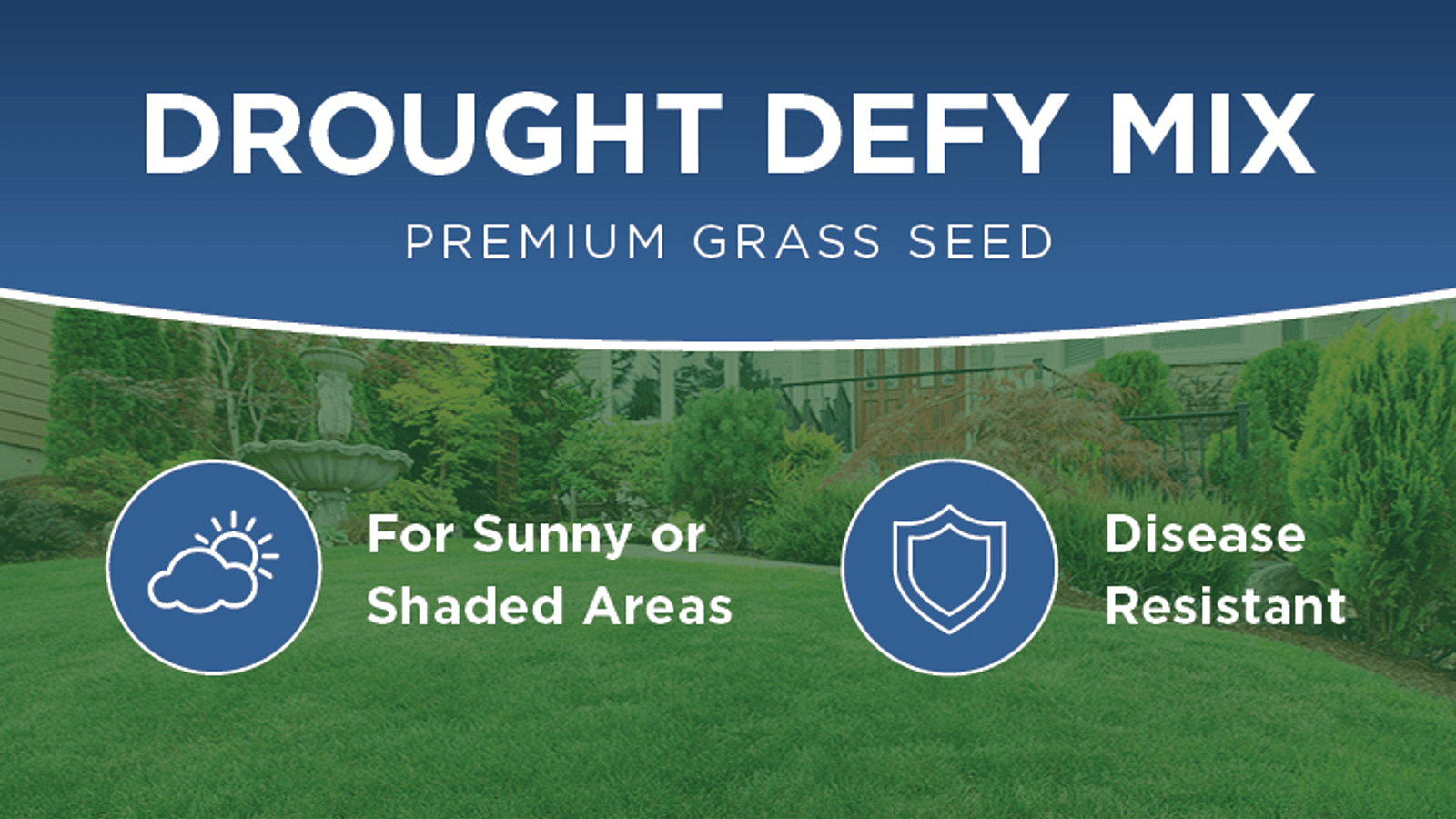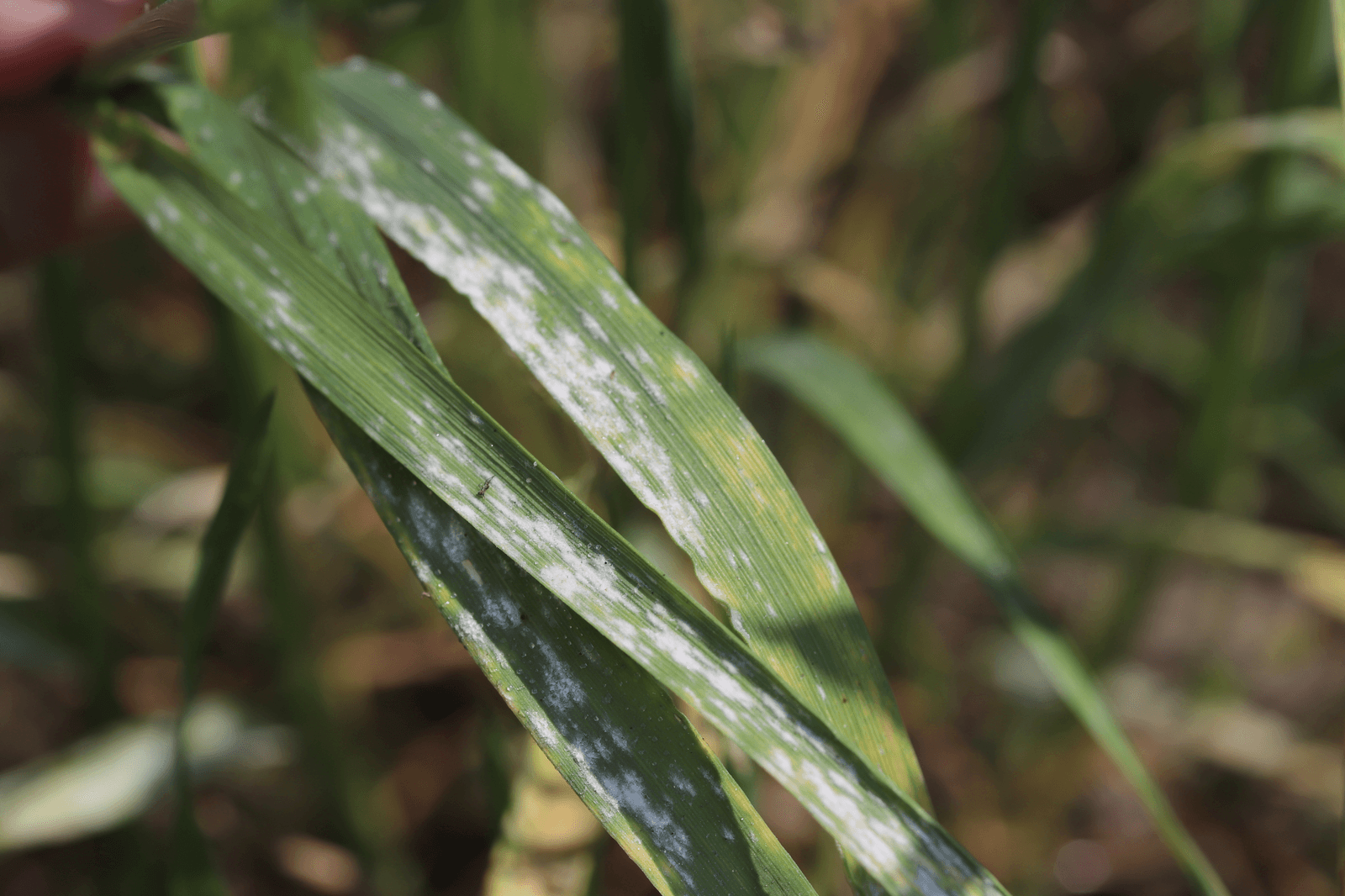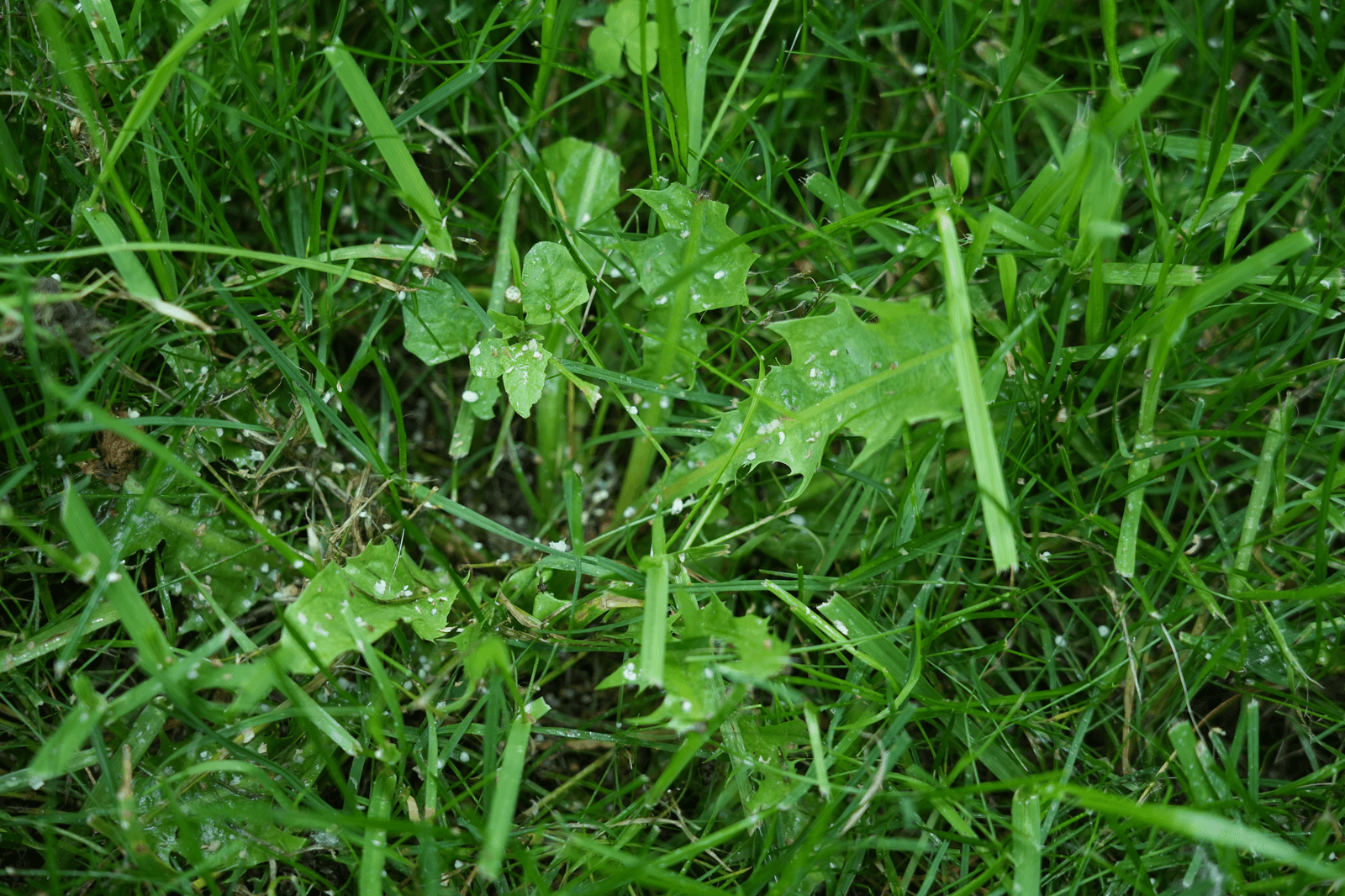Drought Defy Mix
Premium Grass Seed
- Fescue, Kentucky Bluegrass, Perennial Rye Blend, ideal for transition zones and cool-season turf locations
- Excellent drought and heat tolerance once established
- 99.9% weed seed-free
- For sunny or shaded areas
- Deep green color once established
- Improved disease resistance
- Extreme wear tolerance
- Product of the USA
Overview
The Andersons Drought Defy elite mix is a combination of tall fescue, Kentucky bluegrass and perennial rye uncoated grass seed ideal for growing in the transition zone and cool-season turf areas. It is known for its exceptional drought and heat tolerance once established, as well as improved disease resistance. Drought Defy mix delivers a deep green color and excellent density, making it ideal for creating lush, vibrant lawns.
For new seeding at 7 lbs. per 1,000 sq ft, a 25 lb. bag can cover 3,571 sq ft. For overseeding at 5 lbs. per 1,000 sq ft, a 25 lb. bag can cover 5,000 sq ft.
| Package Sizes | 25 lb |
SEEDING WITH DROUGHTY DEFY GRASS SEED
NEW LAWN OR COMPLETE RENOVATION
1. Rototill the soil to a depth of 4-6 inches. Soil should be loose and clod free. If possible, apply soil amendment at this time.
2. Level the area to eliminate high or low spots then roll to firm the soil.
3. Apply starter fertilizer per directions.
4. Sow the grass seed at the recommended rate (see analysis tag).
5. Cover the seed with peatmoss or straw and rollover seed to get good seed to soil contact.
6. Moisten the soil to a depth of around 1 inch. Keep the root zone moist by watering 2 to 3 times per day (rainfall depending). Avoid creating puddles. Keep soil moist until the new lawn has fully germinated, 3 to 4 weeks.
7. New grass seedlings will begin to emerge in 7 to 10 days after seeding. Do not mow until your lawn is 3” to 4” tall – usually about 3 weeks from the time of planting.
8. After the first mowing, fertilize again. Do not apply weed and feed products for at least six weeks.
For new seeding at 7lbs. per 1,000 sqft, a 25lb. bag can cover 3,571 sqft.
OVERSEEDING
Overseeding can be done annually to help keep your lawn healthy and thick.
1. Mow lawn 0.5-1 inch and remove clippings.
2. Rake to loosen the soil and break apart thatch. Remove debris.
3. Apply starter fertilizer.
4. Apply seed evenly over the entire lawn at the recommended rate.
5. Keep the soil moist until the new seed germinates.
For overseeding at 5lbs. per 1,000 sqft, a 25lb. bag can cover 5,000 sqft.
PATCH REPAIR
1. Rake the spot to loosen the soil and break apart thatch. Remove debris.
2. Apply starter fertilizer and the seed to the spot.
3. Cover with peat moss, straw or compost.
4. Keep the area moist until the seed has germinated, approximately 2 to 3 weeks.
Related Products
